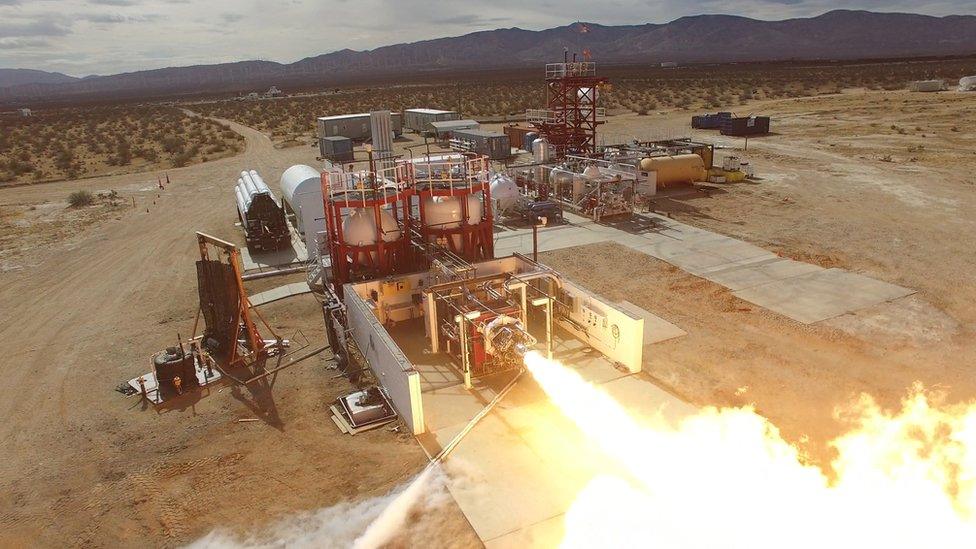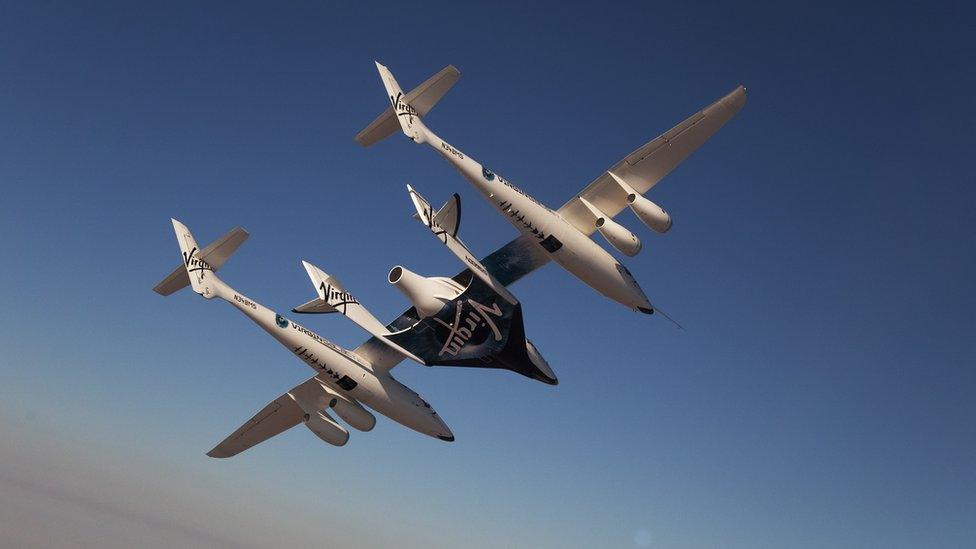Virgin boosts rocket capability
- Published

The increased performance enables a bigger payload mass and volume capability
Sir Richard Branson's space company says it is boosting the capability of its satellite launcher.
The Virgin Galactic rocket will be air-launched in a similar way to the firm's proposed tourist spaceplane - from under a carrier jet.
But by having its own dedicated carrier, the satellite launcher's performance can be improved.
The aim now is to loft payloads up to 200kg into standard orbits, instead of the previously stated 120kg.
And it should be possible to get 400kg into some other, lower orbits.
Virgin Galactic intends to debut the liquid oxygen/kerosene rocket in 2016 or 2017 for a price of under $10m.
"This is customer-led; we've been talking to the market about what they wanted, and it's this new capability," said CEO George Whitesides.
"And what we hear from industry is that if we had this capability right now, we'd be selling [launches] like hot cakes," he told BBC News.
Mr Whitesides was speaking here in Paris at the World Satellite Business Week, external conference organised by Euroconsult.

Engine tests are being conducted now in California's Mojave Desert
The extra performance in the rocket, which is dubbed LauncherOne, comes from stretching its tanks to hold more propellant.
This increases the mass and length of the rocket (from just over 15m to nearly 20m). And in order to handle that, Virgin Galactic will need a more capable carrier jet than the one designed to lift the tourist spaceplane to its launch altitude.
Mr Whitesides says this is in the process of being acquired, but he will not divulge at this stage if that means merely a bigger version of the tourist carrier or a completely different design altogether.
One of the implications of the change is a larger volume under the clamshell fairing that houses the satellite payload on its ascent to orbit.
Virgin executive AC Charania said this was almost as important as the extra mass capability.
"We're challenging satellite operators to think about what you could do with that extra volume. You could get a very interesting telescope in there for Earth observation, for example."

The rocket will have bigger tanks to carry more propellant
Virgin Galactic has one big customer for its LauncherOne rocket at the moment: the OneWeb company.
This British Channel Islands-based concern is planning a huge constellation of over 600 broadband satellites.
It will be using LauncherOne to maintain the network at full strength.
"What they're offering us now is the capability of two satellites per launch, just below the operational orbit, but that extra performance means we could also take one satellite directly into the operational orbit, which is interesting to us if we have a failure and need a rapid replacement," explained OneWeb's Brian Holz.
Virgin Galactic believes a key selling point beyond just the price will be its frequent and responsive schedule.
It intends to turn out 20-30 rockets a year at its Long Beach, California, factory.
Satellite payloads will be integrated in the nearby Mojave Desert, before being flown out over the Pacific by the carrier jet for their launch to orbit.
British space officials have expressed the desire to have Virgin Galactic run out of the UK as well.
Ministers are looking to license an operational spaceport before the end of the decade.

Like the spaceplane, the LauncherOne rocket will use a carrier jet
Jonathan.Amos-INTERNET@bbc.co.uk, external and follow me on Twitter: @BBCAmos, external